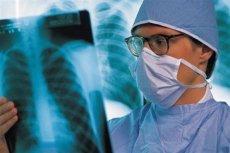New publications
Scientists know how to make lung cancer prevention more effective
Last reviewed: 01.07.2025

All iLive content is medically reviewed or fact checked to ensure as much factual accuracy as possible.
We have strict sourcing guidelines and only link to reputable media sites, academic research institutions and, whenever possible, medically peer reviewed studies. Note that the numbers in parentheses ([1], [2], etc.) are clickable links to these studies.
If you feel that any of our content is inaccurate, out-of-date, or otherwise questionable, please select it and press Ctrl + Enter.

Testing drugs to prevent lung cancer takes a long time. It can take five, ten, or even fifteen years to get results. Unfortunately, there is currently no way to quickly determine the effectiveness of a drug. Researchers at the University of Colorado Denver Cancer Center are proposing new ways to test drugs that could significantly reduce not only the time needed to complete trials, but also the number of patients involved in the tests.
Experts say chemoprophylaxis (giving specific anti-TB drugs to healthy people who are at particular risk of developing TB to prevent them from getting the disease) is an important approach to preventing lung cancer.
"If we could find a surrogate endpoint for mortality from a devastating disease like lung cancer, it would be much easier to run trials and also significantly reduce the time it would take to run them," said lead author Professor Fred Hirsch.
The initial goal of the study was to find certain microRNAs whose expression levels could predict whether a patient would respond to chemoprophylactic drugs. Depending on the level of microRNA expression that the researchers found, the study would be structured so that the scientists could test the drug only on those patients whose outcome would be most likely to be successful. MicroRNAs are segments of genetic material that can be used as indicators for diagnosing the development of lung cancer.
Changes in the expression of microRNA 34c occur six months after treatment. In those patients who showed a visible effect of the drugs after six months, the expression of microRNA 34c was lower, while in those study participants who showed no changes, the expression of microRNA 34c remained unchanged.
“Instead of waiting 15 years for the results of a study, we could find out whether a drug is effective in chemoprophylaxis within six months of treatment. We could speed up the pace of testing, which would ultimately lead to new drugs being brought to market more quickly,” says Dr. Hirsch.
Dr Hirsch says this discovery needs more research and testing, but this ability to “predict” outcomes using miRNA-34c could make a significant difference to the quality of treatment for lung cancer patients.
 [ 1 ], [ 2 ], [ 3 ], [ 4 ], [ 5 ], [ 6 ], [ 7 ], [ 8 ], [ 9 ], [ 10 ]
[ 1 ], [ 2 ], [ 3 ], [ 4 ], [ 5 ], [ 6 ], [ 7 ], [ 8 ], [ 9 ], [ 10 ]
